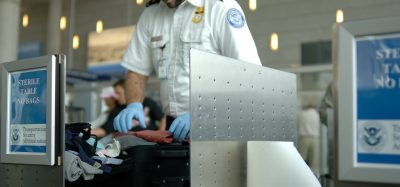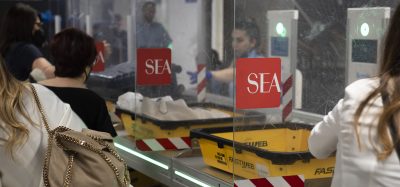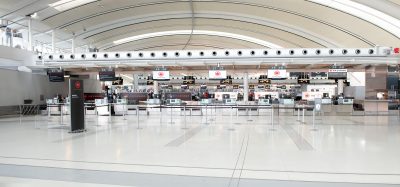Airline baggage and freight – reducing the risks
- Like
- Digg
- Del
- Tumblr
- VKontakte
- Buffer
- Love This
- Odnoklassniki
- Meneame
- Blogger
- Amazon
- Yahoo Mail
- Gmail
- AOL
- Newsvine
- HackerNews
- Evernote
- MySpace
- Mail.ru
- Viadeo
- Line
- Comments
- Yummly
- SMS
- Viber
- Telegram
- Subscribe
- Skype
- Facebook Messenger
- Kakao
- LiveJournal
- Yammer
- Edgar
- Fintel
- Mix
- Instapaper
- Copy Link
Posted: 29 September 2009 | Chris Pinder, Regional General Manager, British Security Industry Association | No comments yet
Recent publicity over the release from custody of the convicted Lockerbie bomber has provided a potent reminder of the continuing importance of airline baggage and freight security. Chris Pinder, British Security Industry Association’s Regional General Manager, looks at some of the current procedures and developments in this vital area.
Recent publicity over the release from custody of the convicted Lockerbie bomber has provided a potent reminder of the continuing importance of airline baggage and freight security. Chris Pinder, British Security Industry Association’s Regional General Manager, looks at some of the current procedures and developments in this vital area.
The security of items carried aboard commercial aircraft combines technology and procedures for inspection and screening in the four categories of hand baggage, luggage checked into the hold, travellers themselves and cargo. The most visible of these measures is, of course, the security checks conducted on all passengers and their hand baggage before they are allowed to board an aircraft. All hand baggage, including items such as coats, handbags, laptop computers, mobile phones and cameras, undergoes x-ray examination before passengers are allowed to enter the departure lounge. In addition, travellers pass through metal detectors or backscatter X-Ray whole body scanners and may be subject to physical search.
These procedures have been augmented in recent times by the introduction of regulations governing the maximum size of permitted hand luggage and the prohibition of certain items carried by passengers which are subject to individual inspection. This move is designed to prevent the carriage of objects capable of being used or combined to create weapons or explosives, following the experiences of 9/11 and other terrorist plots to destroy aircraft in flight. Prohibited items include liquids in quantities greater than 100ml, scissors, razor blades, knives, tools, sporting bats and toy or replica guns. In addition to these restrictions, an absolute ban has been imposed on the carriage of certain items, either on the person or in the aircraft’s hold, including flammable liquids and solids, oxidisers, gas cylinders, lighter fuel and radioactive materials.
The security industry is working to enhance the performance of technology for screening luggage and for monitoring the movement of bags from the check-ins to the aircraft. This latter area is a critical aspect of flight safety, including the use of barcode readers to scan the labels of bags, automatically linking them to individual passengers at the time they board to ensure that unaccompanied luggage is not loaded. Radio Frequency Identitifcation chips can also be used for this purpose and can be particularly useful in moving freight around the airport. Tag identification and location information is instantly forwarded over a network to a host computer running the software to provide real-time management solutions via powerful reporting, display, and decision and control functions. Linked assets and people can be tracked and located within close proximity, thus providing an automatic, non-invasive asset protection solution while enabling freedom of movement.
Other systems are capable of screening hold baggage using computer tomography equipment to generate a detailed, three dimensional image of the contents of a bag. Hybrid machines are also being employed, whereby tomography is augmented by X-ray diffraction (suspicious items located by the former then have their chemical composition determined by the latter). Other developments include systems to automatically detect a wide range of threats, such as small amounts of explosives, guns, liquids or other contraband in hand luggage, bringing computer tomography to the passenger gates.
Computer tomography comprises a non-destructive evaluation technique for producing two and three-dimensional cross-sectional images of an object from flat x-ray images. It allows the characteristics of the internal structure of an object to be determined, such as dimensions, shape, internal defects and density. The baggage passes between a radiation source and an imaging system, connected to a computer, developing a cross-sectional view of the object and its contents. The Department for Transport (DfT) has approved the use of a multi view x-ray hold baggage system, which provides images that enable automated explosives detection. The new system has the ability to process up to 1,800 bags per hour and its approval follows a successful series of trials carried out at Gatwick Airport. Speed of operation is, of course, a key factor in any mass transit environment and the industry is making substantial progress in this area, increasing the throughput of both baggage and personnel scanning systems and reducing their susceptibility to false alarms.
Although such systems are becoming quicker and more versatile, their effectiveness ultimately depends on the expertise and vigilance of personnel. BSIA member companies have also been heavily involved in developing and delivering training standards in the aviation sector. Members of the BSIA and other organisations responsible for training air crew and ground security staff have now been placed on an approved list, administered by DfT. Details can be found online at www.transec.dft.gov.uk.
Security of baggage does not even stop at the aircraft, with airlines now installing covert CCTV systems in their baggage holds. Although these systems are primarily to detect theft from passenger luggage, they also provide security against contraband items being added to a bag either for criminal or terrorist reasons. With advances in technology, CCTV can now provide evidence of any tampering that occurs, ensuring prosecutions can be carried out.
The fourth category of security, air cargo, is in many ways the most difficult to address. The DfT says that UK airlines alone move well over two million tonnes each year, a huge and complex operation involving tens of thousands of people in a host of industries across the country. A revised process has now been developed, based on the principle of making customers known within the UK air cargo security regime. All cargo to be carried on a domestic or international flight originating in the UK must now be screened to ensure that it does not carry a prohibited article, for example an incendiary or explosive device. The screening process involves different techniques, which can be carried out by the airline or a ‘security approved air cargo agent.’ Once screened, cargo must be stored and transported in secure conditions until it is placed on an aircraft. In this process, unscreened cargo is termed ‘unknown’ cargo, while screened cargo is considered as ‘known.’
‘Known’ status clearly has major commercial implications for freight shippers and therefore provides the impetus to influence the security practices of a wide and diverse industry. DfT-approved validators inspect a shipper’s security arrangements as a precondition of awarding ‘known customer’ status. In this way, freight from known customers can be established as secure. The inspection includes approval of physical security measures at the site, staff recruitment and reference checks, staff security training, other organisations using the same site, site access control, security at the point where the cargo becomes air cargo, the air cargo preparation operation, air cargo packing procedures, storage of secure cargo and transport of secure cargo to security approved air cargo agent or airline. The known customer regime therefore underpins all our efforts for enhanced security, by giving us back some of the certainty we need and limiting the terrorists’ capacity for surprise.
The BSIA supports all these procedural and technological measures, as part of the government’s aim to develop a long-term framework that will maximise the beneficial aspects of aviation and minimise the negative ones, both in terms of passenger travel and the supply chain. This means bolstering physical security strengths at airports, introducing new procedures outside the immediate air freight environment and continuing the existing intelligence-led approach to targeting those who pose a threat, without excessive disruption to passengers, trade and freight. It is clearly necessary to strike this balance if we are to maintain the economic and social strength that terrorists want to destroy.
















